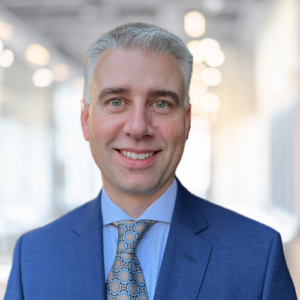Vivian has no cash in the bank, no TFSAs and no RRSPs and often dips into her $70,000 HELOC to pay expenses
A woman we’ll call Vivian, 40, lives in southern Ontario with her 19-year-old daughter, a university student. Vivian has two jobs — one as a civil servant with a $104,000 annual pre-tax income, the other in real estate sales, where she earns $20,000 before tax. She has three rental units which generate $34,800 per year in gross income before expenses. Her pre-tax gross annual income, $13,233 per month, dwindles to $7,482 per month after mortgage costs for the rentals. That’s little return for the effort.
Vivian’s finances are complex. She has no cash in the bank, no TFSAs and no RRSPs. In some months, expenses rise and leave her with little income. She carries much of the difference by use of her $70,000 home equity line of credit.
Vivian’s portfolio
Vivian would like to retire at 57 when she is eligible for a full pension. Her rentals, which provide $2,900 per month in income over financial costs, are leveraged. Though they have a combined estimated value of $2.35 million, they are carrying mortgages totalling $1.4 million. In addition, her $1.2 million house has a $821,000 mortgage. Tenants pay all property taxes and utilities. At present, with low interest rates on her mortgages ranging from two per cent variable to 2.69 per cent fixed — plus 4.45 per cent fixed for her HELOC — revenues for the rentals exceed carrying costs. Were interest rates to rise by 1.5 per cent from present rates, her profit margin would cease to exist.
The properties are not very profitable. Her average cash flow after mortgage service costs for three rentals, $3,080 per month or $36,960 per year, represents just two per cent of total asset value of $2.35 million or slightly more if return of principal on her recently refinanced properties is included.
Vivian wants to simplify her complicated financial life. The irony of Vivian’s finances is that, though prosperous on paper with several sources of income, she is living from hand to mouth. Retirement is 15 years away and she is not sure how she will get there.
Family Finance asked Eliott Einarson, a financial planner who heads the Winnipeg office of Ottawa-based Exponent Investment Management Inc., to work with Vivian. “She feels pressured partly because of the need to manage two jobs and three rentals,” Einarson says. “Moreover, Vivian’s investments are extensions of her life. They are active and custodial — she must look after the rentals.”
Future cash flows
At Vivian’s planned retirement from her civil service job at 57, her job pension will pay $70,000 annually including a $14,000 bridge to 65. She would continue to have $34,800 annual rental income and $20,000 of real estate commissions for total, pre-tax income of $124,800. After 30 per cent estimated tax, she would have $7,280 per month to spend, just about enough if her rental mortgages have been paid off and her current $6,000 monthly payment is no longer.
At 65, her employment pension will lose its $14,000 annual bridge and drop to $56,000. However, Vivian will gain $7,362 Old Age Security and $12,590 estimated Pension Plan benefits. She can maintain $20,000 realty sales commission income and $34,800 rental income. Her total income would be $130,752. After 28 per cent average tax and loss of almost all of her Old Age Security to the clawback, she would have $7,400 per month to spend.
There is a qualification, however. At present, Vivian uses her HELOC, which has a $70,000 present balance, as a chequing account. If she can pay it off over the next ten to fifteen years with monthly payments of $700 for the ten-year paydown or perhaps $500 for the fifteen year pay down and assuming for each period that low single-digit interest rates prevail over that time, then her retirement income will be unimpaired. Eventually, she might give up her realty sideline, dropping her total income by $20,000 per year at present rates but at a net cost of perhaps just $12,000 after tax. As well, her tax rate would decline and she could keep roughly half of her Old Age Security.
Vivian will continue to depend on her HELOC until her daughter leaves home. She can use any extra income to pay down debts. As her free cash flow rises, she should open a Tax-Free Savings Account and use its growing balance — the present lifetime contribution limit is $69,500 — to diversify her capital. Shuffling money into a TFSA would reduce exposure to income tax and the clawback and even have testamentary advantages when she dies. Moreover, TFSA investments would diversify her assets, Einarson suggests.
Asset mix and returns
Vivian could migrate some of her rental income over time to stocks with uninterrupted dividend histories. That would provide diversification for present investments that are 100 per cent in her rentals. Were she to invest $1,560 per month or $18,720 per year in diversified financial assets starting at age 42 when she would have increased cash flow, then after three per cent annual returns she would have $607,000 at age 65. Paid out over 30 years to her age 95, that sum would generate $30,100 per year before tax. Some of this saving could be done within a TFSA.
Investing in stocks and bonds would be a plunge into the unknown. However, Vivian knows her real estate business and that is a substantial advantage for her present investments. She would do well to move slowly as she pays down the HELOC, building a portfolio within a TFSA as net cash flow increases. She can favour the TFSA over an RRSP, for, in retirement, her civil service pension will put her into a 30 per cent marginal tax bracket. An RRSP would thus provide tax postponement, but not a great deal more.
“The transition from a low-risk income in the civil service to the higher risks of investing in market assets like stocks, bonds, exchange traded funds and perhaps low fee mutual funds would have some rough spots,” Einarson says. “The payoff would be independence from debts that threaten her financial future.”
Retirement stars: Three *** out of five






